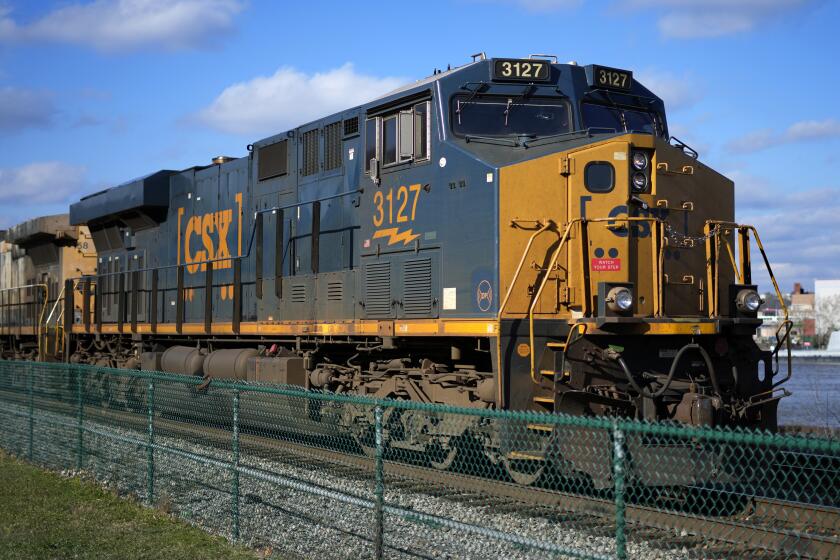Deflation looms as Fed policy sputters
As if workers didn’t have enough problems, deflation risks are rising around the world.
No, that’s not a typo. Eternal vigilance against inflation is giving way to widespread concern about the opposite: A protracted period of falling prices. Or, if not outright deflation, a persistent weakness the Economist magazine dubs “lowflation.”
Prices are flat or falling in Europe. Japan is struggling after two decades of deflation. Even in China, price growth is half the official 4 percent target.
Investors seem worried, pushing down bond yields and prices of stocks and commodities in volatile trading this month.
Commentary
More columns about Business by Dan McSwain
But hold on a second. Falling prices are great for consumers.
Witness this celebratory Facebook post from a North County commuter last week: “Getting gas at Costco $3.16 per gallon. Lowest price I’ve seen in a long time.”
Indeed, oil prices have tumbled from $115 a barrel in June to around $85, liberating billions of dollars for consumers to spend on other stuff.
The savings go beyond energy. Overall inflation through September was running at an annual rate of 1.7 percent in the U.S., according to a report Wednesday by the Bureau of Labor Statistics.
What’s more, the overall figure is skewed upward by housing costs, which account for 31 percent of “core” inflation, the index that excludes volatile food and energy costs.
For the 12 months ending in September, rents were up 3.3 percent. If you already owned a home, the prices you really paid were flat or falling in many other areas, particularly imported goods.
However, the good news ends there, because most consumers are also workers. And deflation or lowflation is bad for workers.
Increasingly, when businesses try to raise prices, consumers are responding by cutting spending.
Nestle, the world’s biggest food company, told investors recently that it has no pricing power in key markets, a sober analysis shared by rivals making everything from ice cream to whiskey.
It’s this backdrop of economic weakness that makes deflation so scary to economists and policymakers. We’ve been here before; see Japan since the 1990s and the entire world in the 1930s.
When consumers come to expect broadly falling prices, they respond by putting off spending. Why buy now if it will be cheaper next month?
The resulting drop in sales causes more discounting as companies struggle to survive. If sales don’t recover, companies cut wages or lay off workers, who then have less to spend, which further depresses spending.
Deflation also inverts the world of borrowers.
With inflation, wages and business revenues grow, making payments on fixed-rate loans cheaper over time. But deflation does the reverse, effectively pushing debt costs higher, along with defaults.
And defaults push down prices of the underlying assets, as owners saw during the great housing deflation from 2006 to 2012.
Such spirals of price and debt deflation can be hard to break. Traditional policy tools like cutting interest rates don’t work when consumers and companies aren’t buying.
But central banks have other tools, said Milton Friedman, the great 20th Century economist who taught that both inflation and deflation are essentially problems with monetary policy. To illustrate his point, he said governments could cure deflation by dumping dollars from helicopters until people started spending again.
Friedman, who died in 2006, warned against the “fallacy” that low interest rates meant the supply of money was large enough to support a rebound in demand. Using Japan as an example, he said central banks must be ready to buy bonds and take other creative measures to get cash circulating again.
Under former Chairman Ben Bernanke, the Federal Reserve took this advice, adding $4 trillion to its balance sheet since 2008.
This intervention, the largest in history, probably saved us from a second Great Depression.
Yet the monetary magic is wearing off. Most of the cash “printed” by the Fed is sitting idle on bank balance sheets as reserves.
And the latest round of bond purchases will end next week, if Fed Chairwoman Janet Yellen sticks to her plan.
U.S. unemployment is falling fast. Yellen hopes wages will soon grow, breaking a four-decade pattern of stagnation and eventually producing a Goldilocks inflation rate of around 2 percent.
Markets don’t believe her. A key measure of interest-rate spreads suggests inflation will be low for the next 40 years.
This possibility has economists, led by former Treasury Secretary Lawrence Summers, calling for massive borrowing and spending by governments on infrastructure, education and other investments to spur healthier growth.
Given today’s politics, this is a pipe dream. Even the 2009 federal “stimulus” was heavy on transfer payments and light on infrastructure.
History says to expect inaction until the next crisis. It may be time to avoid debt and raise cash.
Get U-T Business in your inbox on Mondays
Get ready for your week with the week’s top business stories from San Diego and California, in your inbox Monday mornings.
You may occasionally receive promotional content from the San Diego Union-Tribune.







